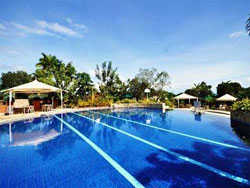Family Tradition
Seven Churches Visitation- also known as Visita Iglesia, it is an ancient pious Roman Catholic Lenten tradition to visit seven churches on the evening of Holy Thursday. On Maundy Thursday of Holy Week, following the Mass of the Lord's Supper, the Blessed Sacrament, is reserved on the Altar of Repose in the church for Adoration of the Blessed Sacrament. During the Seven Churches Visitation or Visita Iglesia, the faithful visit several churches sometimes seven, sometimes fourteen, sometimes no set number depending upon the particular practice to pray before the Blessed Sacrament in each church.
Simbang Gabi- it is a devotional nine day series of masses practised by Roman Catholics and Aglipayans in the Philippines in anticipation of Christmas and to honour the Blessed Virgin Mary. The masses are held daily from December 16 to December 24, and occur at different times ranging from as early as 03:00 to 05:00 AM. On the last day of the Simbang Gabi, which is Christmas Eve, the service is instead called Misa de Gallo.
Novena every night- it is a devotion consisting of prayer said on nine successive days asking to obtain special graces.
Weekend family bonding- not only jamming with family help to solve problems but it can also strengthen families.
Watching UAAP women's volleyball every season- there's something incredibly relaxing and comforting about watching volleyball with your family. Pass down your favorite team which is ATENEO LADY EAGLES as you cheer up your fav team on T.V.
Attending Sunday Mass
Celebrating New Year's Eve and Christmas Eve
Simbang Gabi- it is a devotional nine day series of masses practised by Roman Catholics and Aglipayans in the Philippines in anticipation of Christmas and to honour the Blessed Virgin Mary. The masses are held daily from December 16 to December 24, and occur at different times ranging from as early as 03:00 to 05:00 AM. On the last day of the Simbang Gabi, which is Christmas Eve, the service is instead called Misa de Gallo.
Novena every night- it is a devotion consisting of prayer said on nine successive days asking to obtain special graces.
Weekend family bonding- not only jamming with family help to solve problems but it can also strengthen families.
Watching UAAP women's volleyball every season- there's something incredibly relaxing and comforting about watching volleyball with your family. Pass down your favorite team which is ATENEO LADY EAGLES as you cheer up your fav team on T.V.
Attending Sunday Mass
Celebrating New Year's Eve and Christmas Eve



